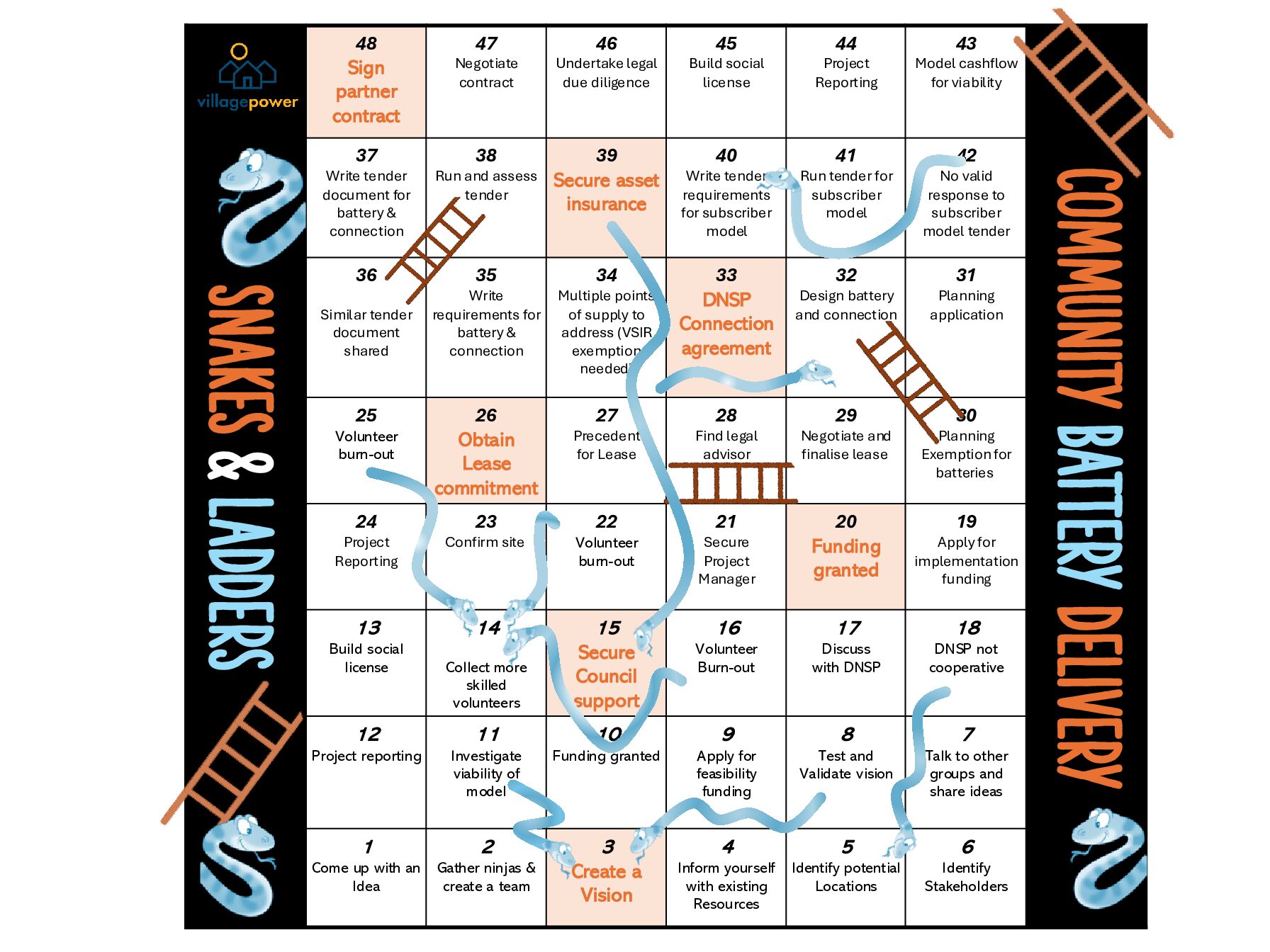
After seven years of persistent and relentless work to get a community-owned neighbourhood battery installed for the Fairfield community of north-east Melbourne, the community energy group Village Power has learnt that no insurance company will provide asset insurance for their battery.
“We thought insurance would be very expensive for us to obtain, but we did not anticipate that we would not be able to get coverage at all,” the President of Village Power, Graeme Martin, recently told the All-Energy Conference.
It’s the latest set-back for the volunteer-run social enterprise, which likens the process of installing a community owned battery to a game of snakes and ladders, with snakes around every corner.
Over the years Village Power managed to obtain funding for their 500 kWh battery through the Victorian Government’s Neighbourhood Battery Initiative.
Their plan is to have a subscription model for the shared battery where excess energy from homes and businesses with rooftop solar is available for subscribers, or sold back to the grid.
They managed to locate a site for the battery, and to lease land for the battery from the local Darebin council. They also succeeded in signing a connection agreement with an electricity distributor.
But just when they were ready to press go on the project, they have been knock-backed for property and asset insurance by 20 odd insurance companies and brokers.
“Insurance is an essential safeguard, and it’s also a requirement of our lease with council,” Martin says. “So no insurance, no lease, no land, no project.”
“We have concluded that community organizations without other assets are currently unable to obtain property and asset insurance,” said Laura Cacho from Wave Consulting who have been advising the community group about their battery.
Unable to obtain insurance directly from insurers, Village Power approached the local Darebin council to help provide insurance for the battery but were told council was not in a position to roll the neighbourhood battery into their portfolio of insurable assets.
The group is now in negotiations with a commercial retailer, but have discovered this arrangement will require them to relinquish ownership of their battery.
Village Power is not the only community energy group that has been unable to obtain insurance after a laborious process to install a community battery.
The Yarra Energy Foundation (YEF) was also knocked back by insurers a year after they installed their community battery in Fitzroy North in June 2022.
YEF were told there is not enough data for the insurance industry to create a mid-scale battery insurance facility, which would allow them to assess the financial risk of taking on such assets.
“It was a surprise to us, we didn’t anticipate such a response,” YEF’s Chief Operating Officer, Tim Shue, says.
Whilst Shue says YEF appreciates the need for battery safety, and risk is an important consideration for insurance, he also points out that the technology used in these types of lithium-ion batteries has been used for a long time and the safety profile is well known.
Moreover, it appears insurance companies don’t have a problem with other third parties, such as Councils and electricity distributors, taking out insurance on community batteries.
YEF is currently working with the insurance industry to find a longer-term solution for their Fitzroy North battery and a second battery they plan to install in Clifton Hill.
Difficulty obtaining insurance for a community battery has also plagued Geni.Energy, another not for profit that promotes renewable energy solutions in Narrabri and the northwest of NSW.
“It’s taken us two years to lock down all the other elements to the project to finally have an installation date for March next year,” Sally Hunter, the Managing Director of Geni.Energy says.
But after investigating insurance options for 8 months Geni.Energy’s insurance broker admitted they were “having some hurdles that we didn’t expect.”
Alternative insurance options for the Narrabri community are also limited, but are being investigated. “We don’t have any retailers who will even talk to us so they are not lining up to help.”
“It’s very annoying,” Hunter says. “You would think that the market would have caught up by now!”
Graeme Martin believes the installation of medium sized batteries like Village Power’s community battery shouldn’t just be left to the electricity distributors, the DNSPs, to install if Australia is going to build all the storage we will need in the future.
He argues the inability of community energy groups to obtain insurance for important assets that are needed for the energy transition is “a fundamental market failure and government should step in when funding community batteries.”
Sally Hunter says she has raised the issue with the Department of Climate Change, Energy, the Environment and Water (DECCCW), the federal government agency which funded their battery, who have told her they “can’t do much at this stage but we’re staying across the issue.”
Graeme Martin is still, surprisingly, optimistic about the future of Village Power’s battery. Even though the group has already spent seven years bashing away at an intransigent energy system to install their battery, and there are still hurdles to overcome, Martin believes community groups like his can “move the dial” for the renewable energy transition, and “nudge the system along a zero carbon path.”
Anne Delaney is the host of the SwitchedOn podcast and our Electrification Editor, She has had a successful career in journalism (the ABC and SBS), as a documentary film maker, and as an artist and sculptor.


